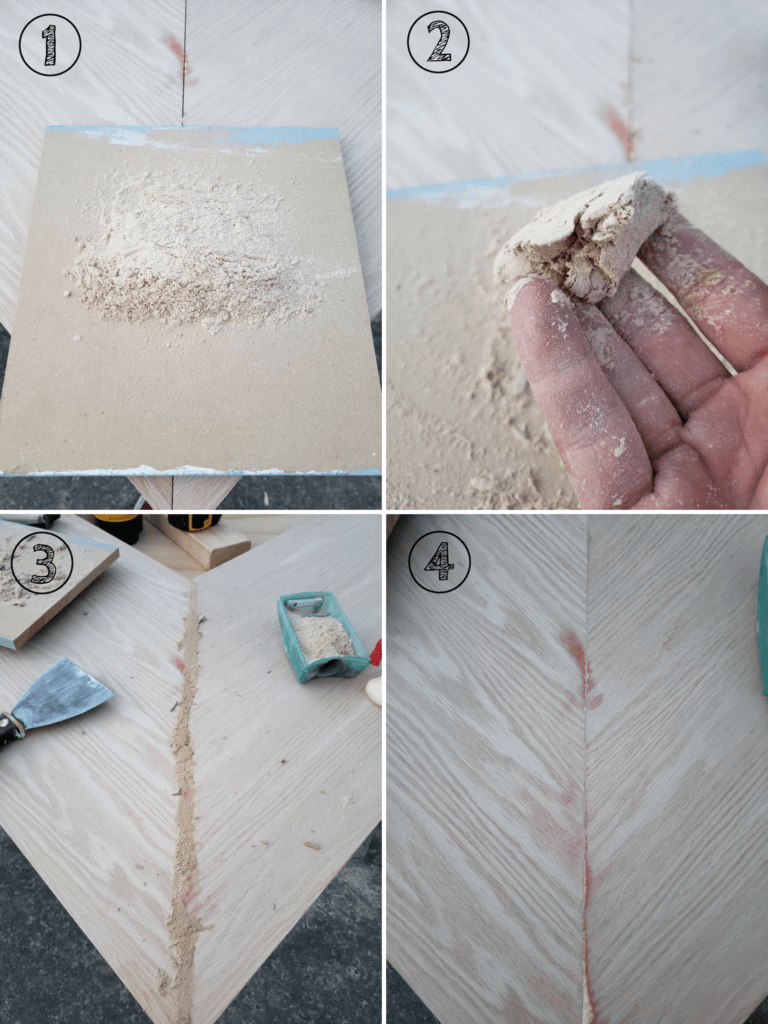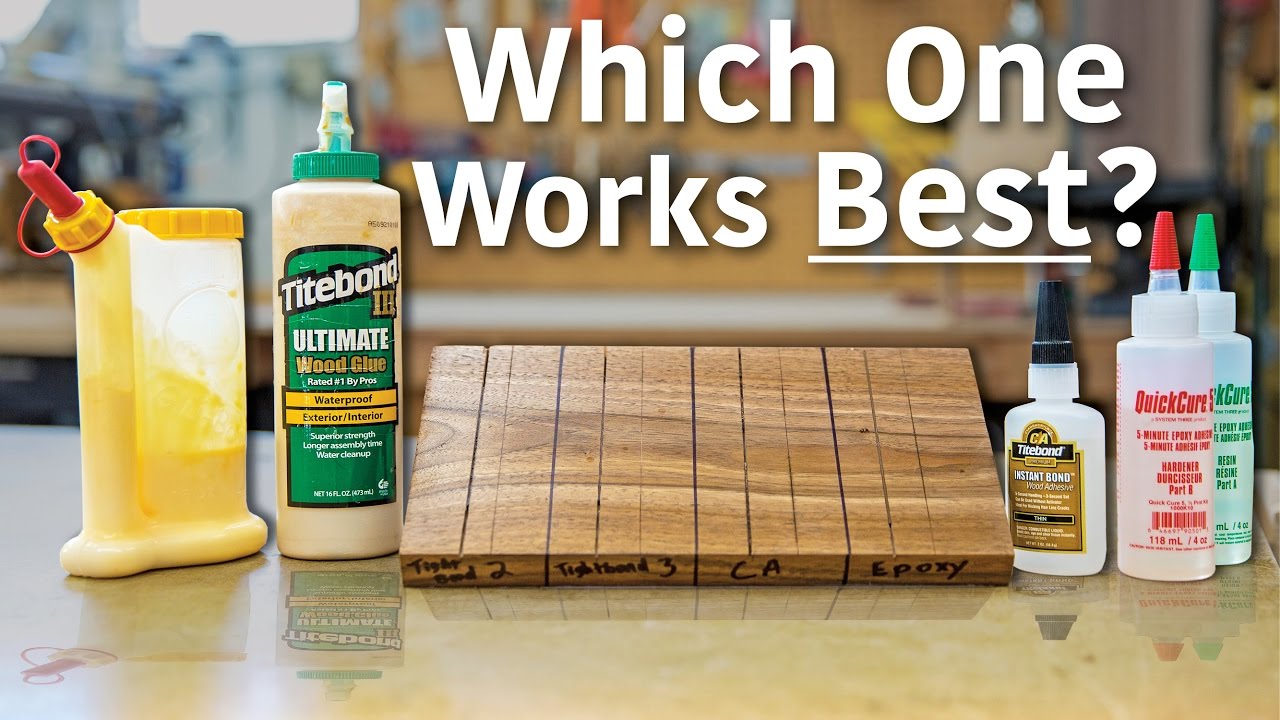Hey there, curious minds! Have you ever wondered if you can mix wood glue with sawdust? Well, you’re in the right place to find out! In this article, we’ll explore the fascinating world of woodworking and delve into this intriguing question.
So, you’re probably wondering why someone would want to mix wood glue with sawdust in the first place. It turns out that this combination can be used to create a substance called “wood filler.” This magical gooey mixture can be incredibly handy when it comes to repairing cracks, holes, or other imperfections in wood.
Now, you might be thinking, “But wait, how does it work? Can I create my very own wood filler at home?” The answer is yes! By blending wood glue with sawdust, you can create a paste-like substance that can be shaped, sanded, and stained, just like real wood. So, let’s dive deeper into this topic and uncover the secrets behind this DIY woodworking hack!
As a friendly reminder, don’t forget to wear your safety goggles and gloves when working with wood glue and sawdust. Safety first, my adventurous friends! Now, let’s delve into the world of wood filler and discover how you can mix wood glue with sawdust to create something truly extraordinary.
1. Start by collecting sawdust that matches the color of your wood.
2. In a container, mix the wood glue with the sawdust until you achieve a thick paste-like consistency.
3. Apply the mixture to the area that needs to be filled, using a putty knife.
4. Allow the filler to dry completely before sanding it down to achieve a smooth finish.
5. Finish by painting or staining the repaired area to match the surrounding wood.
Using this technique, you can effectively repair and restore wooden surfaces with ease.

Can You Mix Wood Glue with Sawdust?
Wood glue is a common adhesive used in woodworking projects, but what happens when you mix it with sawdust? In this article, we will explore the possibilities and limitations of mixing wood glue with sawdust. Whether you are looking to repair a wooden piece or create custom wood filler, understanding the properties and techniques involved will ensure successful results.
Why Mix Wood Glue with Sawdust?
1. Repairing Damaged Wood
One of the main reasons people mix wood glue with sawdust is to repair damaged wood. When a piece of wood has chips, gouges, or holes, using a mixture of sawdust and wood glue can help restore its original look. The sawdust acts as a filler, and when mixed with the glue, creates a paste-like substance that can be applied to the damaged area. Once dry, the mixture can be sanded down and painted or stained to match the surrounding wood.
It is important to note that this method works best for repairs on small to medium-sized areas. For larger repairs or structural damage, it is recommended to consult a professional or consider replacing the affected piece entirely.
2. Creating Custom Wood Filler
Another reason to mix wood glue with sawdust is to create custom wood filler for various woodworking projects. Sometimes off-the-shelf wood fillers may not match the color or grain of the wood you are working with. By mixing wood glue with the same type of sawdust from the project, you can create a filler that seamlessly blends in with the rest of the wood.
To make your own custom wood filler, collect sawdust from the same type of wood you are working with. Mix the sawdust with wood glue until it reaches a thick and moldable consistency. Apply the filler to the desired area, making sure to fill any gaps or imperfections. Once the filler is dry, sand it down and finish the wood as desired.
3. Enhancing Wood Joints
Mixing wood glue with sawdust can also be beneficial for strengthening wood joints. When assembling two pieces of wood, applying a mixture of wood glue and sawdust to the joint can help fill any gaps and improve the overall strength of the connection. The mixture acts as a filler, creating a more solid bond between the two pieces.
Before applying the sawdust and wood glue mixture, make sure the joint is clean and free of any dirt or debris. Apply a thin layer of the mixture to the joint and firmly press the wood pieces together. Wipe away any excess mixture and allow it to dry completely before sanding or finishing the wood.
Best Practices for Mixing Wood Glue with Sawdust
1. Type of Wood Glue
Not all wood glues are suitable for mixing with sawdust. It is best to use a wood glue that dries clear and is suitable for woodworking projects. Polyvinyl acetate (PVA) glue, commonly known as white glue or carpenter’s glue, is a popular choice. It is important to follow the manufacturer’s instructions for the specific glue you are using.
2. Quality of Sawdust
The quality and type of sawdust used will affect the final result. Make sure the sawdust is clean, dry, and from the same type of wood as the project. Sawdust from a different type of wood may result in a noticeable color difference. If needed, you can collect sawdust by sanding a piece of scrap wood or purchase sawdust specifically for woodworking projects.
3. Mixing Ratio
Achieving the right consistency is key when mixing wood glue with sawdust. Start by adding small amounts of sawdust to the glue and gradually mix until the desired consistency is reached. The mixture should be moldable and easily spreadable but not too runny. If the mixture is too thick, add more glue; if it is too thin, add more sawdust.
It is important to mix the glue and sawdust thoroughly to ensure a uniform and smooth consistency. Avoid leaving any clumps or uneven areas in the mixture, as they may affect the final result.
Safety Considerations
When working with wood glue and sawdust, it is essential to take proper safety precautions. Here are a few important points to keep in mind:
1. Ventilation
Ensure that you are working in a well-ventilated area to avoid inhaling fumes from the wood glue. If necessary, wear a mask to protect your respiratory system.
2. Eye and Skin Protection
Wear safety goggles and gloves to protect your eyes and skin from contact with the wood glue and sawdust mixture. Avoid touching your face or rubbing your eyes while working.
3. Cleanup
Clean up any spills or excess glue immediately with a damp cloth. The mixture can become sticky and difficult to remove once it dries. Dispose of sawdust and other waste materials properly.
In conclusion, mixing wood glue with sawdust can be a practical solution for repairing damaged wood, creating custom wood fillers, and enhancing wood joints. By following the best practices and taking proper safety precautions, you can achieve excellent results in your woodworking projects. Remember to experiment and practice before applying the mixture to your desired project to ensure a satisfactory outcome. Happy woodworking!
Key Takeaways: Can You Mix Wood Glue with Sawdust?
- 1. Mixing wood glue with sawdust can create a handy filler for small cracks and holes in wood projects.
- 2. The mixture of wood glue and sawdust can be sanded and painted after it dries.
- 3. It is important to use a ratio of 1 part wood glue to 1 part sawdust for the best results.
- 4. This mixture is not suitable for load-bearing or structural applications.
- 5. Always test the mixture on a scrap piece of wood before using it on your actual project.
Frequently Asked Questions
Are you curious about mixing wood glue with sawdust? Find the answers to your burning questions below.
Can sawdust be mixed with wood glue?
Yes, sawdust can be mixed with wood glue to create a thick paste that is commonly used for various woodworking projects. This mixture is called wood filler and it serves a couple of purposes. Firstly, it allows you to fill in gaps, cracks, or holes in wood surfaces. Secondly, it can be used to create decorative effects or textures on wood surfaces.
To make wood filler, simply mix wood glue and sawdust together until you achieve a thick, workable consistency. The amount of sawdust you add depends on the desired thickness and color of the filler. It’s essential to use fine sawdust for better blending and smoother results. Once mixed, apply the wood filler to the desired area, let it dry, and finish it according to your preference.
What type of wood glue works best when mixing with sawdust?
When mixing wood glue with sawdust, it’s recommended to use a PVA (polyvinyl acetate) wood glue. This type of glue is commonly used for woodworking projects and provides a strong bond. PVA wood glue is water-based, dries clear, and is easy to apply and sand.
While other types of wood glue, such as epoxy or hide glue, may also work, PVA wood glue is the most commonly used and easily accessible option. It’s important to read the label and instructions of the specific wood glue you choose to ensure it is suitable for the project you’re working on.
What can I use wood filler made from wood glue and sawdust for?
Wood filler made from mixing wood glue and sawdust has various applications in woodworking projects. It can be used to fill small gaps, cracks, or knots in wood surfaces, providing a smooth and even finish. The sturdy bond created by the mixture ensures that the filled area becomes part of the wood’s structure.
Additionally, wood filler can be used to create decorative effects or textures on wood surfaces. By adding color or using different types of sawdust, you can achieve unique and visually appealing designs. Wood filler also allows for easier staining and painting of wood surfaces, as it helps create an even and consistent surface.
Can wood filler made from sawdust and wood glue be stained or painted?
Yes, wood filler made from mixing sawdust and wood glue can be stained or painted to match the surrounding wood or desired finish. The porous nature of the sawdust allows the filler to absorb the stain, providing a seamless blend with the wood surface.
Before staining or painting, it is crucial to ensure that the wood filler is fully dry and hardened. Once dry, sand the filled area to a smooth finish and apply the desired stain or paint. Remember to follow the manufacturer’s instructions for the stain or paint you are using for the best results.
Is mixing wood glue with sawdust a permanent solution?
Although mixing wood glue with sawdust creates a strong and durable bond, it is important to note that it is not a permanent solution for certain woodworking applications. Over time, wood expands and contracts due to changes in temperature and humidity, which can cause the wood filler to crack or break free.
In cases where there is significant movement or stress on the wood, it is advisable to use other methods, such as traditional joinery techniques or mechanical fasteners, to ensure a long-lasting and secure connection. However, for filling small gaps or cosmetic purposes, mixing wood glue with sawdust can be an effective and visually appealing solution.

Summary
Mixing wood glue with sawdust can create a substance called wood filler. This can be used to fill in gaps, cracks, or holes in wood projects. However, it’s important to remember that wood filler made from glue and sawdust is not as strong as solid wood. It’s best used for small repairs and not for major structural issues. Additionally, it’s crucial to follow the instructions on the wood glue and make sure the mixture has the right consistency before applying it. Overall, mixing wood glue with sawdust can be a handy solution for fixing minor imperfections in wood, but it’s not a substitute for solid wood or professional repairs.
